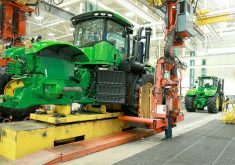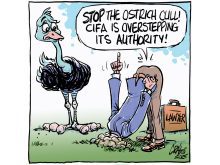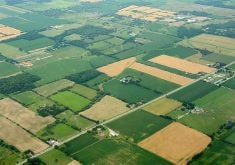I do not know any farmers in southwestern Saskatchewan under 35 years of age. I know only a few in their 40s. There are few young people willing and able to make the necessary sacrifices in order to farm. After spending more than 35 years of my life as a producer/farmer and off-farm professional, I do not see the present system of farming as sustainable. A new farmer has to assume too much debt to enter the business. Even with off-farm employment and two salaries to support the farm and family, the capital requirement to enter farming is prohibitive. Farmers have to invest $30 to make $1. The return is not enough to pay the interest on the loans. Potential farmers are finding less risky, less demanding and more profitable ways to make a living. As there are fewer farmers and larger holdings, a different system is emerging. Tracts of land are being bought by corporations who hire managers and contract with locals to get the work done. These are often the same corporations that control the sale of inputs or the marketing of farm products. The business of farming is becoming integrated with the same interests owning the land, production, markets and retail sales. There is danger that this level of integrated ownership will lead to higher food costs, lower food quality and the complete loss of small farm operations. In the East, close to populated areas, I have met young people who are considered farmers because they produce organically for direct sales to consumers. They have a few acres that grow vegetables and fruits. They have formed community supported agriculture groups and they market directly to city people concerned about fresh wholesome food. These CSAs are allowing a few young people to own land and be involved in agriculture.In the West, there are few CSAs. Young people interested in farming have to get involved on a much bigger scale. They either have to be third or fourth generation farmers with family backing to provide capital, or a new farmer who brings millions of dollars in capital from a non-farm source. Neither is happening often enough to sustain the industry. Of great concern is the expense side of farming. The costs are daunting. Inputs like fuel, fertilizers and chemicals are controlled by a small number of corporations. Seed may also be corporately controlled and farmers may be prevented from saving and using their own seed. Prices are ever rising. The offsetting income is not there. Buyers of most commodities are the major corporations. Prices paid to farmers remain low. In the case of cattle, the prices are as low or lower than they were in the 1930s, adjusted for inflation.Wheat and barley producers have had protection of the farmer controlled Canadian Wheat Board and the government supported Canadian Grain Commission. The CWB has sustained smaller farmers by guaranteeing that they get paid for their grain and that they reap the benefit of having the farmer-controlled monopoly on sales. The CWB and CGC are under constant attack because grain corporations want them gone. The companies will make more profit when they get control and have the monopoly for marketing these grains. The farmers will make less profit and will have greater risks of not being paid for their grain. Without the CGC, Canada will lose its position as an exporter of quality wheat and barley. Farmers are slowly disappearing. Young people are moving off the farm and staying away. If Canada wants new and young farmers, the government is going to have to ensure that there is a way to set up a farm and make a decent living from it. There has to be support for the profitability of the small farm. If the traditional farm is not important anymore, the government can keep ignoring the plight of the farmer and deal with powerful corporations that are taking over the sector. Canada cannot fix the problem of too few young farmers without fixing the problems in agriculture. Historically, farming has been a rewarding lifestyle and occupation. It has provided the background education for many of Canada’s resilient leaders. Today, farming is big business. Farmers have been forced to expand and adopt the modern methods of production. Corporations make huge profits in supplying the inputs and machinery used for production. The wholesalers and retailers of farm products make a good living by building in profits before setting their prices. The railways and the trucking industry get their share. The farmers are paid last. The farmers take what the buyers will give them. They are at the mercy of the few corporate buyers and the world markets. As Canadian farmers, we grow food efficiently and effectively. Our tradition as producers of quality food will only continue if producers receive at least the cost of production and if young Canadians are supported in entering the industry. There has to be a way for the small farm to survive. I urge our governments and concerned citizens to support the mechanisms that strengthen surviving farms and that create the environment where young people can develop viable business plans and make a living from the farm.
Read Also

Trump’s trade policies take their toll on Canadian producers
U.S. trade policy as dictated by president Donald Trump is hurting Canadian farmers in a multitude of ways.














